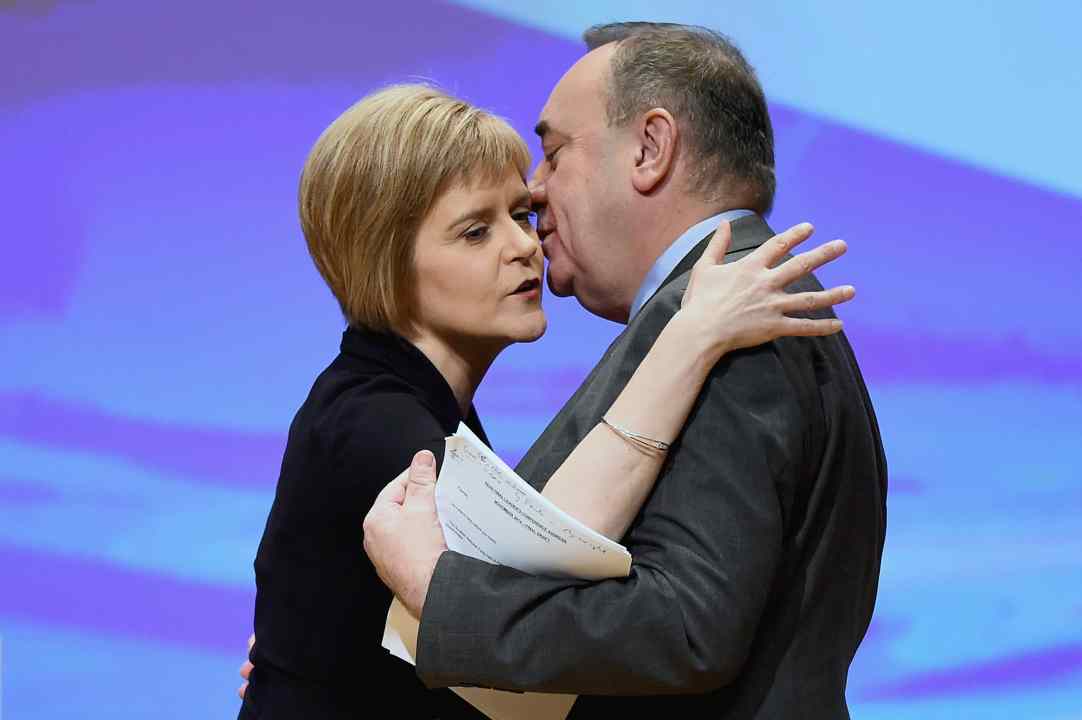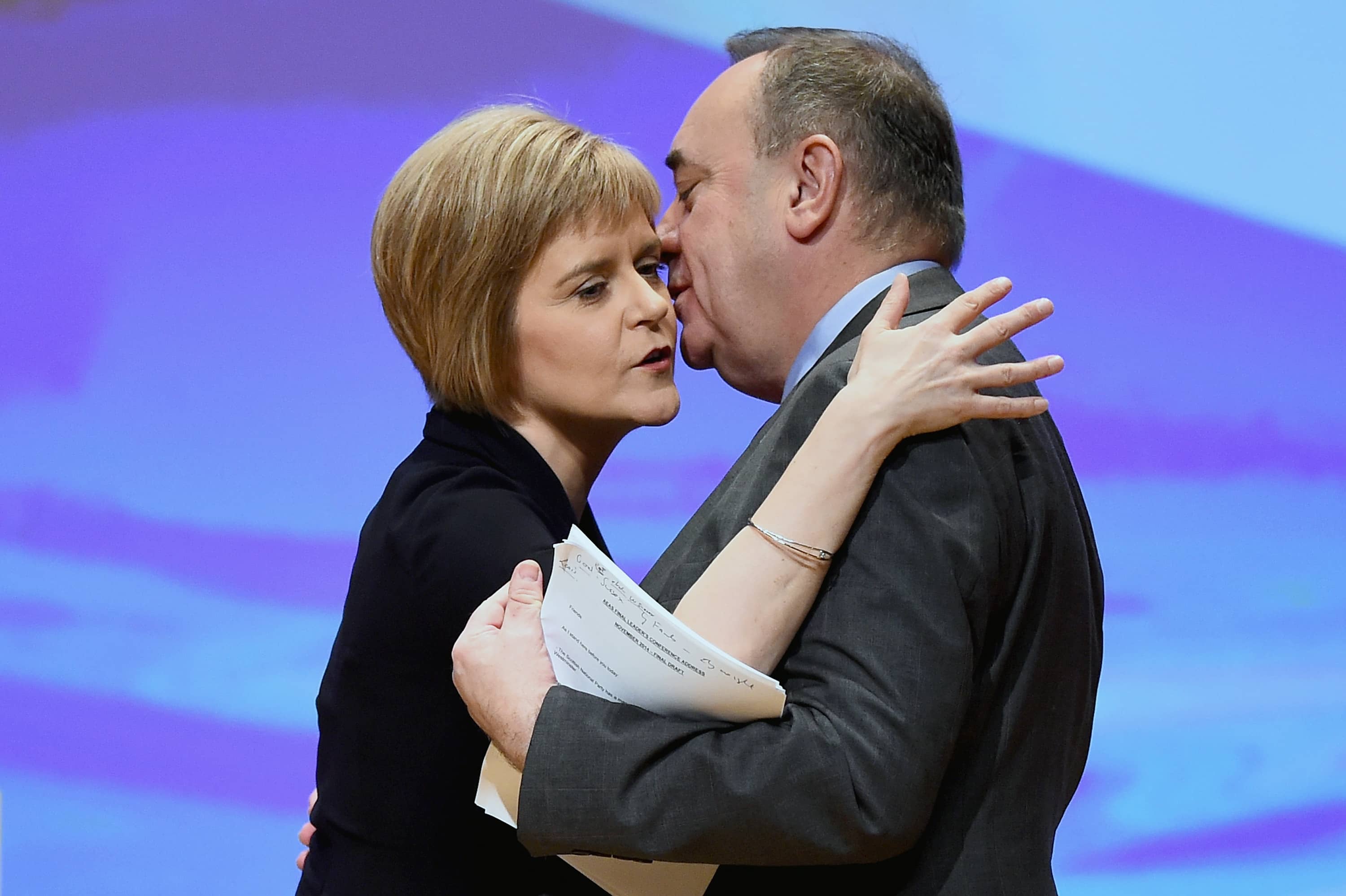On Saturday it was the seventh anniversary of the Scottish vote on independence – how time flies. That contest saw a decisive ten point majority against separation; not that you’d know it from the way Nicola Sturgeon conducts her affairs. The SNP First Minister succeeded Alex Salmond in the post just weeks after the plebiscite and has spent most of her time in office talking tough and delivering little on making Scexit a reality.
In many ways it’s a good thing the vote did not go the SNP’s way. There’s the whole 300 years of history shtick of course but as the calculations of the 2013 White Paper on independence make clear, not all of the predictions necessary for the sunlit uplands of an independent Scotland have managed to come true. Below is Steerpike’s guide to seven claims seven years on which have not turned out exactly the way Sturgeon et al envisaged…
Oil
Perhaps most obvious difference between what was promised by the Yes supporters and what has actually transpired is the huge difference in the oil price between 2014 and 2021. Back then oil was trading at around $100 a barrel, with independence calculations based on that figure being around $110; now it actually trades around $70, having been closer to $50 for much of the last seven years. The SNP forecast oil revenues of £6.8 billion to £7.9 billion for 2016-17, the first year of independence had there been a ‘yes’ vote. In reality Scottish government statisticians showed that just £208 million was actually raised in oil revenues during those 12 months – an over-estimate of some 3,500 per cent by the Nationalists.
Oil prices are not the only thing which have changed dramatically since 2014. The SNP have gone off the idea too, despite John Swinney’s claims in March 2013 that ‘the early years of an independence Scotland are timed to coincide with a massive North Sea oil boom.’ Now nationalists are far keener to show their eco-credentials and heap praise on Greta Thunberg – begging the question as to what exactly an independent Scotland’s economy would based on?
Public finances
While the oil price has plunged, Scotland’s deficit has continued to spiral. Less than two years after the independence vote it reached an eye-watering 9.2 per cent and in 2018/19 it remained 7.2 per cent – seven times larger than that of the UK. It was around 8 per cent before the pandemic but Covid has now seen it spiral to a whopping 22 per cent compared to a UK-wide 14 per cent of GDP. Public-sector spending in Scotland increased by 21 per cent in the most recent tax year, to around £18,000 per person, about £1,800 above the UK average.
We will never know how an independent Scotland would have been able to make it through the pandemic without furlough and Britain’s ability to borrow but it seems highly improbable it would have fared much better outside the UK. Just last week two studies released by the Institute for Government said a separated Scotland would find it more expensive to borrow than UK Government counterparts due to a lack of track record in international markets. One thing is clear, the 2013 White Paper claim that: ‘on independence in 2016, Scotland’s estimated financial position will continue to be healthier than the UK as a whole’ seems, er, somewhat false.
Save the NHS
Healthcare was a key battleground in the referendum debate, with Scottish ministers and other pro-independence campaigners claiming that a ‘Yes’ vote was the only way to safeguard the NHS. In the second televised debate between Alex Salmond and Alistair Darling, the former suggested that English moves towards ‘privatising and charging’ for healthcare would hit services in Scotland and that ‘the only certain way of protecting our precious, publicly-funded NHS, is independence.’
Of course Scotland vote No and seven years on, surprise, surprise, the NHS is still very much with us. The body remains publicly-funded and the responsibility of Holyrood which has run it since 1999. Mind you, given the current ambulance crisis engulfing the Scottish health service, maybe removing Humza Yousaf from his post is the only way to really protect the NHS…
Currency
It’s been difficult to keep up with the currency contortions of SNP politicians these past seven years, with more positions than the Karma Sutra. The Scottish government claim in 2014 was that an independent Scotland would retain the pound – a claim rejected by the Conservatives, Labour and Liberal Democrats at the time. Seven years on it’s a testament to the extent of nationalist confusion that the debate still rumbles on, a fact evidenced by the disagreements between the SNP and Greens during May’s Holyrood elections. In 2019 the SNP conference voted to create a new independent Scottish currency, estimated to be worth around a fifth less than the pound and which would have to be abandoned in any case in the event Scotland rejoined the EU. Which brings us on to the next argument…
BordersThe SNP government was at pains to suggest in 2014 that there would be no borders between England and Scotland. Its White Paper stressed that:
There are no circumstances in which the Scottish government would countenance any measure being taken that jeopardised the ability of citizens across the rUK and Ireland to move freely across the borders as they are presently able to do.
Of course what with Brexit and the shenanigans over the Irish border just across the sea, such claims now look naive, to say the least. Even if the UK had voted to remain in the EU, as this Guardian piece from 2014 makes clear it is far from obvious whether borders could be surmounted between Britain and a newly-independent Scotland applying to join the EU and its commitment to free movement.
Drugs
One part of the White Paper which received little attention at the time was the section which referred to social policy in an independent Scotland:
There are some specific issues that would become the responsibility of the Scottish Parliament on independence, such as firearms, drugs – including the proceeds of drug trafficking – and gambling. Responsibility for these will allow Scotland to take an integrated approach to issues that affect our communities.
Since then, drug deaths have climbed every year for seven successive years, with Scotland under the SNP becoming the drugs capital of Europe, with some 1,339 killed last year. The country currently has Europe’s highest per capita rate of drug deaths, at 25.2 fatalities per 100,000 people, more than three-and-a-half times higher than the rest of the UK. Given Nicola Sturgeon’s own admission that on drugs the SNP government ‘took our eye off the ball’ and failed to tackle the issue, would the many challenges of an independent Scotland only have served to exacerbate this issue?
Political reform
Much was written about how voting ‘Yes’ would enable Scotland to become a ‘modern, European democracy;’ a paean to political theory and right-on progressivism with the stroke of a tick in the ballot box. The reality would likely have been very different – as the events of the past seven years have shown, the inhabitants of Holyrood are little different to Westminster when it comes to human foibles and failings.
Of course in another timeline, the vote goes Alex Salmond’s way. Rather than resign as First Minister he is instead recast as the father of a nation – a role which he likely would have embraced with relish. One can only imagine the trauma then that his 2020 trial would have caused his newly independent country as it embroiled its fledgling institutions, especially if Salmond was still the incumbent First Minister.








Comments